Review for Black Blood Brothers: Complete Series
Introduction
I'm taking a break from the here and now of UK anime releases to wander down a back catalogue alley, catching up on a title or two that I might have missed the first time around. The retro look of the characters in Black Blood Brothers was what initially dissuaded me from trying its charms, but having read mostly positive things about it since its release, I've been persuaded to give it a try. And it's another vampire anime. What is it about anime and vampires, the bloodsucking genre seems to be a staple of the medium to the point where every second show has some poor maiden having her jugular drained by someone tall, dark and fangy. Black Blood Brothers is a tale about vampires trying to coexist with humans, in their own private annex, a manmade island off the coast of Japan. If that sounds familiar, you may be thinking of Dance in the Vampire Bund, released a few months ago by Manga Entertainment. But Black Blood Brothers has one thing missing, the dubious taste loli-vampire sexuality. That's a plus point in its favour before I've even started watching the thing.
Ten years previously, a brutal war erupted between vampires and humans, spurred on by the emergence of the Kowloon Children, a breed of vampire unlike any other; mindless, animalistic, brutal, and passing on their vampirism like a plague. Had they prevailed, humanity would have been swallowed up in an instant, but only through an alliance between old blood vampires and humans were they destroyed.
Now, Black Blood vampires live in peaceful coexistence with Red Blood humans in the Special Zone, a manmade island off the coast of Japan, a peace administered by the Order Coffin Company, an organisation dedicated to preserving both communities and keeping the continuing existence of vampires discreetly hidden from the general human populace. The Special Zone is where brothers Jiro and Kotaro are heading, but what they find is less than inviting. The Order Coffin Company's Suppression Squad is tasked with policing the Special Zone, and that means keeping out the various vampire refugees that want to settle there by any and all means. Their brutal violence and attitude towards vampires is at odds with the Order Coffin Company's Compromisers, mediators who work to promote peace and harmony between the two groups. Straight off the bat, Jiro and his brother get caught in the middle of the crossfire. Worse, it turns out that the Special Zone is restricted to vampires of certain bloodlines only. The reason why becomes clear when it transpires that the Kowloon Children weren't destroyed in the war, and that they are on the rise again!
Manga Entertainment present twelve episodes of Black Blood Brothers across three discs.
Disc 1: Bad Tidings
1. Black Blood Brothers
2. Compromiser
3. The Kowloon Bloodline
4. Old Blood
Disc 2: Emergence
5. The Special Economic Zone
6. The Coven
7. Silver Blade
8. Protector
Disc 3: Resurrection
9. The Eleventh Yard
10. The Order Coffin Company
11. The Ocean
12. For the Eternal Pulse of Mine Bloodline, I Would Offer This Blood in Totality
Picture
Black Blood Brothers gets a 1.78:1 anamorphic transfer, which given that it's a show from the days of the old 'born of flame' Manga logo, is inevitably an NTSC-PAL conversion. It's a pretty good one though, free of significant ghosting or similar artefacts. The first thing that strikes you is the rather retro look to the character designs, angular features and elegant proportions that wouldn't be out of place in a nineties anime. That said, the modern digital techniques are still in place, rendering a clean and fluid animation. Black Blood Brothers is a little variable in quality though, with some sequences decently animated with a high frame rate and vivid action. Some scenes just slow down though, and occasionally resort to the freeze frame action techniques used when a budget is lacking. As a result Black Blood Brothers' high points are too often let down by its low points.
Sound
You have the choice between DD 2.0 English and Japanese stereo tracks, with optional translated subtitles and signs. I went with the Japanese track as always, and found it to be acceptable. The English dub too is pretty fair from what I sampled. The show's action comes across well, but where Black Blood Brothers really excels is in its music, getting a theatrical score, grand and broad enough to belie its lower budget visuals. The subtitles are timed well and free of error.
Extras
All three discs get static menus and jacket pictures. On disc one you'll find the textless credit sequences and 2 minutes worth of Original TV Spots. On disc two, the textless credits are repeated, with 4½ minutes of Original TV Spots, while on disc 3, textless credits again, and 5 minutes of Original TV Spots.
The big extra feature to be found here is a set of audio commentaries to accompany all twelve episodes. These are the commentaries from the Japanese releases, and are therefore presented here in their subtitled form. They take the form of two of the voice actresses hosting a guest to comment on the episode in question, and it's usually Mikako Takahashi (Hibari Kusunoki), and Kana Ueda (Swan Chen) hosting the creator of the manga Kouhei Azano. The first two episodes have Ryoko Nagata (Mimiko Katsuragi) instead of Kana Ueda, while episode 5 and 6's commentary has Hiroki Yasumoto (Cain Warlock) instead of Kouhei Azano. Thereafter, while Kouhei Azano is a constant guest, filling in alongside him from time to time in the guest roles are Ryoko Nagata and Hiroki Yasumoto.
These are strictly light, informal and fun affairs, during which a whole lot of wine and cheese is consumed. However, it is worth sticking around for Kouhei Asano's comments, he has a whole lot of insight into the series as the creator of the original light novels, and fills in a lot of the background of the characters, explaining how this world works.
Conclusion
Black Blood Brothers almost works. It's got a very interesting idea, tells its story well, and begins to develop some engaging and unique characters. Ultimately however, it feels less than the sum of its parts, and really just a taster for something greater. It doesn't help that the show concludes with a plot twist that is just left hanging. None of this is made any easier with the commentaries, in which creator Kouhei Azano is always referring to the light novels, revealing far greater background for the characters and always reminding us that you can see how the story progresses by reading those novels.
The idea is one that Dance in the Vampire Bund has also explored, that of humanity coexisting with vampires. Here, just as in Bund, the vampires exist in an enclave magically isolated from, but still part of the world, on an island offshore from mainland Japan, following the devastating conflict that saw their original home in Hong Kong destroyed. The difference here is that there exists an organisation to mediate between man and vampire, to keep the existence of vampires obscured from the general populace, and to police the vampires should they get out of hand. Another interesting aspect of the show is the existence of bloodlines, special abilities that are passed down from vampire to vampire and unique to each bloodline, as well as different weakness that afflict each bloodline. One vampire may be able to teleport, another skilled in magic, and another able to manipulate flame. The show's protagonist, Jiro is perhaps the strongest of the vampires, able to scythe through enemies with ease, but he is also afflicted with most of the traditional vampire weaknesses, suffering in the presence of sunlight and water, while conversely, his charge and brother Kotaro has none of these weaknesses. These vampires feed on human blood for their strength, usually through co-operation, although sometimes not. The human whose blood is drunk develops a temporary empathic bond with the vampire, able to see through their eyes. The only way for a human to become a vampire is to drink that vampire's blood.
Then the Kowloon Bloodline appears, a new breed of vampire that turns their victim, vampire or human, into one of their own simply by drinking their blood, no choice involved, no sense of co-operation and synergy between vampire and human. It also results in a vampire that is feral, bloodthirsty, and unfettered by morality or intelligence. Vampirism has become a virulent disease, and one that leads inevitably to extinction, for once all the humans and vampires have been turned, the Kowloon Bloodline will have to turn on their own. And this is the foe that looms large in the story of Black Blood Brothers, made all the more personal for Jiro as his friend Cassa is now a Kowloon Blood Vampire, and was responsible for the death of the woman Jiro doted on, Alice.
The story's structure is really quite well put together, opting for a Highlander approach, beginning each episode with a flashback through history that fills in a little of Jiro's past, before jumping forward to the present day to continue with the main story. The problem with Black Blood Brothers appears here, in that it is too involved with the mechanics of storytelling, trying to keep its narrative cute and nifty, fitting together like an intricate jigsaw, and comparatively it neglects its character development. Jiro, Kotaro, and Mimi go on their respective journeys, but members of the company, and other denizens of the Special Zone like Sei, Cain, and Zelman flit in and out of the show with regularity, getting enough build up to make them interesting, but never really fleshed out to any satisfying degree. Of the villains, Cassa is the most intriguing, but again so much of her character is left to conjecture, or rather the novels, that watching the show feels a slightly hollow experience.
Ultimately, the twelve episodes of Black Blood Brothers all put together, feel like a pilot episode to a series that was never picked up. It goes about its story, introducing the characters, setting the scene, explaining the rules of the world, and taking its main characters on a journey from solitude and isolation, to interacting and getting to know one another. Jiro is aloof when the story starts, fatalistic, morose, and single-minded in his duty to protect Kotaro. It's by getting to know Mimiko that he finds some aspect of his humanity again, begins to trust people, and recovers a sense of humour. At the same time Mimiko goes from a rather staid office worker, dives straight into a series of fantastic adventures, and forms emotional bonds with Jiro and Kotaro. By the end of the story, the three of them have set up home together, have forged a very promising character dynamic that promises much friction and growth in the future.
That's Black Blood Brothers in a nutshell. When the series ends, we have the main players in the story introduced, the main characters in a situation that looks set for many more fantastic adventures, and the story leaves us on a couple of revelations that ensures that such adventures will be forthcoming. It's a classic set up for a long running adventure series. Alas, no such series will be forthcoming. Black Blood Brothers is just another failed pilot, and that does leave me disappointed.
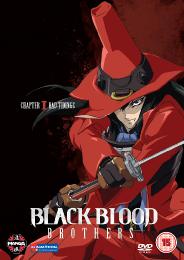
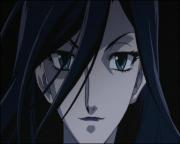

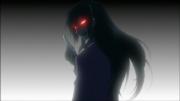
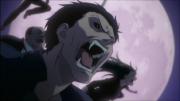
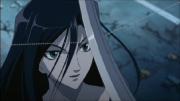
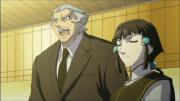
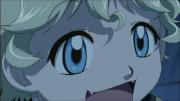
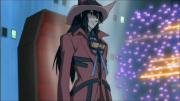
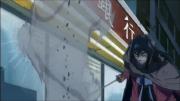
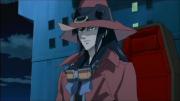
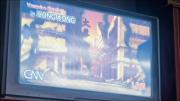
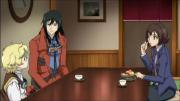
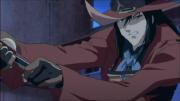

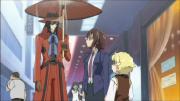
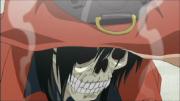











































Your Opinions and Comments
Be the first to post a comment!